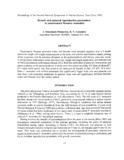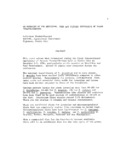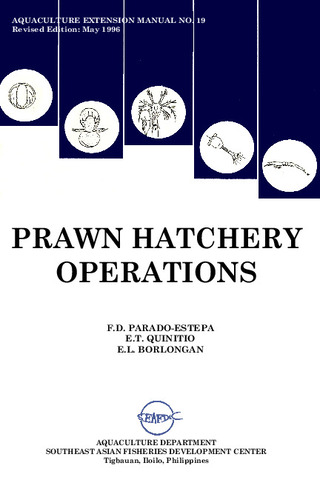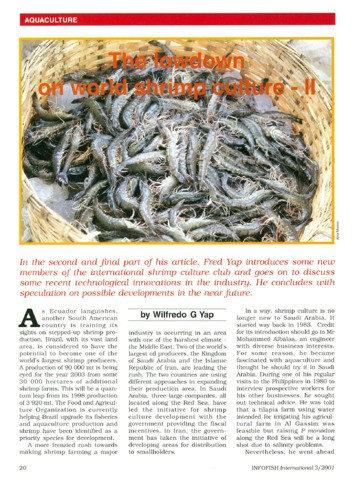Growth and external reproductive parameters in pond-reared Penaeus monodon

ရှာဖွေ/ဖွင့်ပါ။
ရက်စွဲ
1994Page views
528
Share
စိတ္တဇ
Pond-reared Penaeus monodon males and females were sampled regularly over a 4 month period of length and weight measurments to the body and external reproductive organs; joining of the petasmata and the presence of sperm in the spermatophores and thelyca were also noted. Astrong linear relationship exists between body weight and length parameters, and between size of thelycum/petasma and carapace length (CL). Both the unification of petasmal endopodites and sperm presence in the spermatophores in males were first observed at Day 121 from stocking (CL 26.4 mm) while sperm was first noted in the thelycum of females at Day 125 (CL 28.6 mm). Male P. monodon with unified petasmata. In general, size were not significantly different between males and females over the culture period.
Suggested Citation
Primavera, J. H., & Caballero, R. V. (1994). Growth and external reproductive parameters in pond-reared Penaeus monodon. In P. M. Aliño (Ed.), Proceedings of the Second National Symposium in Marine Science, Mindanao State University, Tawi-Tawi, 5-7 November 1992 (pp. 17–27). Quezon City, Philippines: Marine Science Institute, University of the Philippines.
ဘာသာရပ်
Taxonomic term
စုစည်းမှုများ စုစည်းမှုများ
Related items
Showing items related by title, author, creator and subject.
-
An overview of the nutrition, feed and feeding techniques of prawn penaeid/shrimps
Piedad-Pascual, Felicitas (Philippine Council for Aquatic and Marine Research and Development, 1989)This paper echoes what transpired during the first International Conference of Penaeid Prawns/Shrimps held in Iloilo City in December 4-7, 1984, particularly on the Nutrition nd Feed Development. Around 25 papers were ... -
Prawn hatchery operations
Parado-Estepa, Fe D.; Quinitio, Emilia T.; Borlongan, Emeterio L. (Aquaculture Department, Southeast Asian Fisheries Development Center, 1996-05)The manual, an updated version of the 1984 SEAFDEC/AQD manual, presents the underlying principles and step-by-step instructions of prawn larval and post-larval rearing. The techniques described are not only applicable to ... -
The lowdown on world shrimp culture - II
Yap, Wilfredo G. (INFOFISH, 2001)This paper introduces some new members of the international shrimp culture club and goes on to discuss some recent technological innovations in the industry, particularly the polyculture of tilapia (mainly Oreochromis ...




